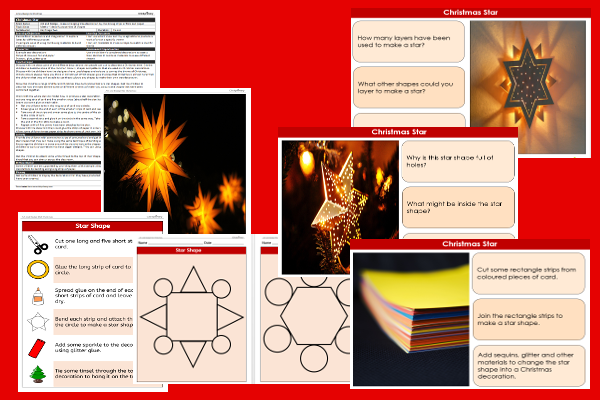Christmas Star

This art and design teaching pack for Key Stage Two gets the children to design and make hanging tree decorations by combining strips of foils with other materials to make a selection of different star shapes.
The class can identify and describe some of the shapes, colours and patterns used on Christmas decorations to develop art and design ideas for their own star shapes.
Download this teaching pack including a lesson plan, classroom activities and an interactive presentation to design and make hanging tree decorations by combining strips of foils with other materials to make a selection of different star shapes
Activities in this teaching pack include display posters to identify and describe shapes colours and patterns used to make different Christmas decorations, a shared reading text to follow a set of instructions about how to make a star decoration and templates to cut and shape materials to produce a hanging tree decoration.
The interactive presentation gets the children to explore how to design and make a hanging tree decoration by combining strips of foils with other materials.
This lesson is part of an art and design scheme of work to get the children to investigate and model how to use different materials and art techniques to design and make decorations to celebrate Christmas. There are teaching activities for shared learning, differentiated worksheets to support independent learning and interactive presentations to introduce concepts and key skills.
-

Maths Arithmetic Assessment
Assess abilities in solving arithmetic number problems for addition, subtraction, multiplication and division when working with informal and formal written calculations
-

Environment
Identify and describe some of the special landscapes and locations that can be found in the world and reflect on how they can be protected and preserved for the future
-

Silent Letter Words
Explore and illustrate the meanings and spellings of some different words with silent letters when using them in a range of topics and scenarios
-

Complaint Letters
Explain and model how to format and structure writing when composing letters of complaint about different issues and scenarios
